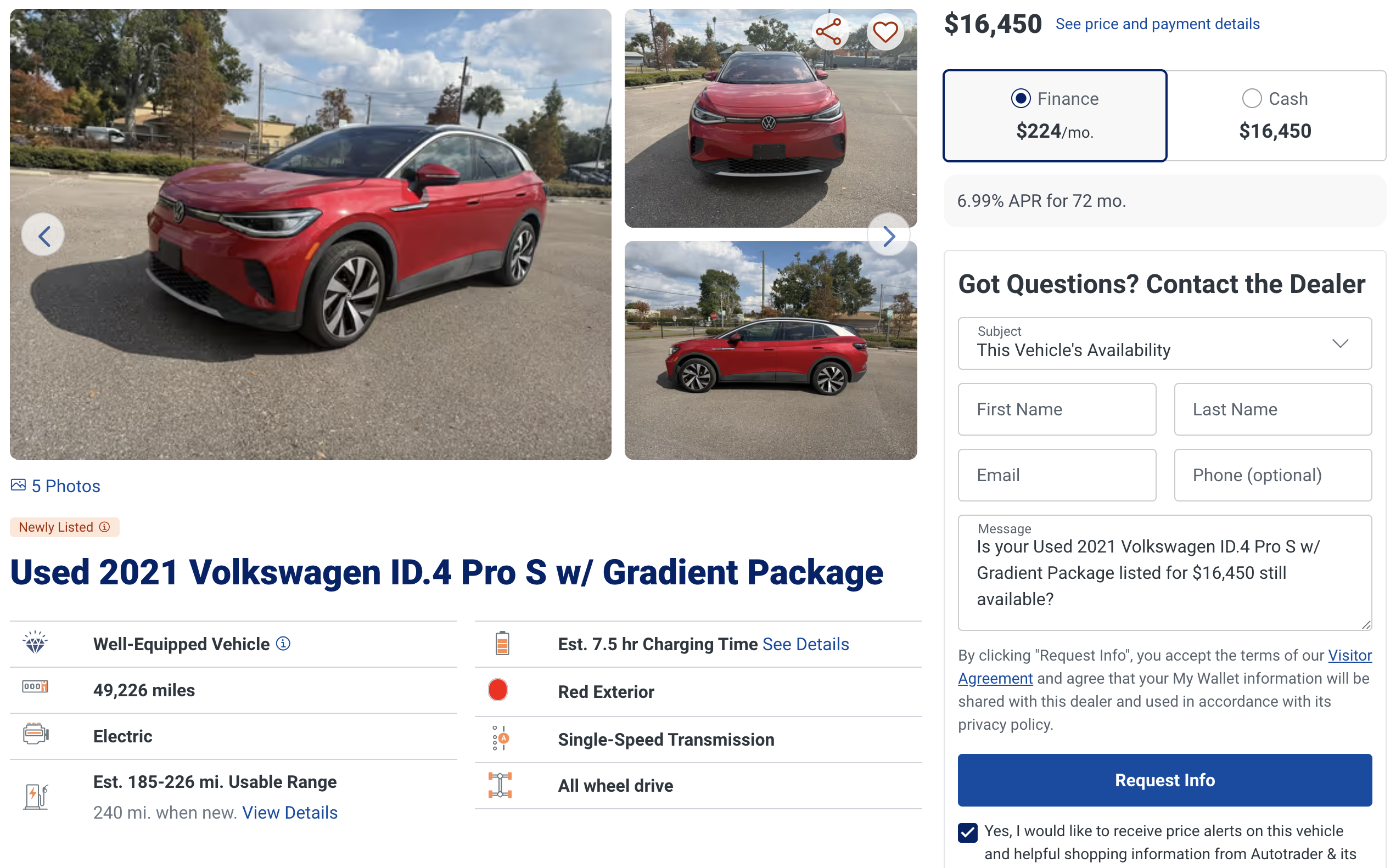Sign up for daily news updates from CleanTechnica on email. Or follow us on Google News!
Large energy consumers must sometimes make a monthly payment to a utility that is a percentage of the maximum amount of electricity they predict that they will use. In Ohio, data center companies had agreed to pay 60 percent of the projected amount. But in May, AES Ohio proposed a new 10 year fee structure that would require data center operators like Google, Amazon, Microsoft, and Meta to pay 90 percent of the expected load, even if they don’t end up using that much. Why? Because those data centers consume prodigious amounts of electricity — far more than any other industry.
Building the new infrastructure needed to supply all that electricity will require massive investments by AES Ohio, and it is concerned that if it makes those investments, it could get stuck with the bill if the tech companies leave the state or new technologies reduce the amount of power those data centers need in the future. In that case, the costs would be passed along to its other ratepayers, which would place an unfair burden on them.
At first blush, it may seem odd that a utility company should be worried about someone using too much of its product. What business wouldn’t want that problem? As we noted in a recent story about virtual power plants, public utility commissions face a daunting task when it comes to balancing the interests of all stakeholders. In case you are wondering what all the fuss is about, below are some numbers for you to think about, as provided by the Washington Post.
According to testimony from AEP Ohio vice president Lisa Kelso, there are 50 pending requests from data center customers seeking electric service at more than 90 sites across the state. Combined, they could potentially add 30,000 megawatts of additional load — enough to power more than 20 million households. That additional demand would more than triple the utility’s previous peak load in 2023, she said. That is a lot of electricity.
Between 2020 and 2024, the data center energy load in central Ohio increased sixfold from 100 to 600 megawatts, she said. By 2030, that amount will reach 5,000 megawatts, according to the utility’s signed agreements. “Central Ohio’s total load will more than double from approximately 4,000 MW to 9,000 MW over the course of a decade, and AEP Ohio’s Top 5 customers will all be data center customers by 2030,” she testified to the Ohio PUC.
Meeting that demand will require AEP Ohio to build new transmission lines, an expensive and time consuming process. According to AEP Vice President Kamran Ali, building that infrastructure is a “big undertaking and a major construction project” that could take between 7 and 10 years to complete.
Data Centers And Federal Policy
“While I acknowledge the challenges AEP Ohio faces due to the substantial increase in load requests from data centers, it is essential that any solution adopted by the Commission provides a fair and equitable solution,” wrote energy consultant Brendon Baatz in testimony submitted to the Ohio regulator on behalf of Google. “With its discriminatory focus on data centers, AEP Ohio is asking the Commission to pick winners and losers in the local economy by imposing unfavorable terms for basic electric service on a single industry.”
Winners and losers? That is a phrase we hear a lot lately from those who oppose government regulation, usually from the fossil fuel industry, which resists any perceived advantage for renewable energy with every fiber of its being. But there is something else going on here, and it involves policy decisions at the highest levels. Last week, the Biden–Harris administration convened a conference in Washington, DC, designed to boost the data center industry. AI is the new shibboleth for national prestige and the government is seeking to speed the permitting process so the US will not fall behind a certain Asian country that shall remain nameless but has Beijing as its capital.
One part of that initiative involves the creation of an “AI data center engagement team to leverage programs to support AI data center development. DOE has curated a suite of resources — including loans, grants, tax credits, and technical assistance — that can help data center owners and operators secure clean, reliable energy solutions. DOE is also planning a series of convenings with data center developers, clean energy solutions providers, grid operators, and other stakeholders to drive development of innovative solutions.” In other words, AI is now a national priority for this administration.
Data Centers And Renewable Energy
The part about “clean, reliable energy” is hopeful, but AES Ohio gets about half of its electricity from burning methane gas, which last time we looked is not a clean energy strategy. According to Clean Choice Energy, “Ohio’s Renewable Portfolio Standard (RPS) has set ambitious targets for renewable energy adoption, aiming for 8.5% of electricity to be sourced from renewables by 2026, with a 0.5% solar carve-out. As renewable technology costs decrease and societal awareness of climate change increases, Ohio is well positioned to exceed these targets, indicating a promising future in sustainable energy production.”
Well, that is some lovely happy talk, but what it means is that AES Ohio and the state of Ohio are way behind many other utility companies and US states — especially Texas — when it comes to making the transition to electricity from zero emissions sources. And the data center owners — Google, Amazon, Microsoft, and Meta — seem to be not all that interested in where the electricity to power their facilities comes from, just so long as it is available. Another voracious consumer of electrical energy is green hydrogen. The administration has crafted policies that require those projects to source the electricity they need from renewable sources.
This notion of not picking winners and losers sounds good in speeches and campaign ads, but the truth is, both green hydrogen and data centers will consume staggering amounts of electricity. Is it really appropriate to say their demand is no different than any other business? Not picking winners and losers is often used to disguise special treatment for one interest group over others.
Melissa Lott, a professor at Columbia University’s Climate School, told the Washington Post it is reasonable for utilities to worry that data centers may not stick around. Compared with more conventional businesses that consume a lot of electricity, like auto factories, data centers are more mobile, she said. “It’s much easier to relocate those services than it is to relocate a manufacturing facility that needs cooling water from a local river or a workforce of hundreds of thousands of people.”
What AES Ohio is really worried about is what will happen if it invests billions of dollars into new grid infrastructure only for the data centers to leave for greener pastures. Another concern is that the AI bubble will burst and those facilities will need much less power than initially projected. If the power company spends big on new infrastructure but the power demand it expected doesn’t materialize, other customers — including business and residential payers — will be stuck with the bill. AEP Ohio’s proposed tariff plan is an attempt to “require data centers to make long term financial commitments — to have more skin in the game,” AEP vice president Matthew McKenzie said.
There is another consideration here. From the point of view of what is best for Ohio, AEP Ohio said in its filing with the PUC that since 2019, non-data center businesses have created approximately 25 jobs in the state for every megawatt of power requested, while data centers have created less than one job per megawatt. Microsoft argues thagt AES Ohio should treat all of its customers “equally” and “not discriminate based on factors that are irrelevant.” Is the number of jobs created per megawagtt a relevant factor for the Ohio PUC to consider? Or in a society of equals, are some more equal than others, as Aldous Huxley suggested in his 1931 book Animal Farm?
Data Centers And National Policy
What happens in Ohio could impact what happens in other states. This year in Virginia, a utility proposed rule allowing it to negotiate custom contracts with any business using more than 200 megawatts of power, not just data centers. In July, Indiana proposed a tariff aimed at funding new infrastructure that would extend contracts, introduce fees for backing out, and raise minimum payments for any customers using more than 150 megawatts. South Carolina is considering rules that would prohibit utilities from offering data centers lower rates.
Stanford Climate and Energy Policy Program director Michael Wara told the Washington Post that the attempt by AEP Ohio to treat data centers differently from other customers is “extremely unusual,” and could set a national precedent. “If Ohio does this and it gains traction as an idea, you can see other state commissions copying them.” But Columbia’s Lott said that some states could still feel the need to attract data center developments that bring utilities new business that helps pay for routine electric grid upgrades. “We are going to get some kind of idea of where the compromise is between the long time frames of electric utilities and the short time frames of tech companies,” she said.
If the Ohio tariff is approved, Microsoft and Google both threaten to leave Ohio. “If AEP Ohio’s proposal is adopted,” wrote Google’s Baatz, “it would create an unfavorable environment for data center development in the state, potentially causing companies to reconsider their investment plans.” But while the tech companies can technically take their power hungry data centers elsewhere, pressure on the electric grid is mounting all over the country, and many communities are already grappling with how to accommodate it. That puts the burden on Big Tech companies to find a way to work with utilities in Ohio and elsewhere.
The Takeaway
A few years ago, the big concern was whether the demand for electricity to charge electric cars and trucks would overwhelm the utility industry. Now it is data centers. Next it will be green hydrogen. The upshot of all this is that we are inventing more ways to consume electricity, predicated on the notion that renewables will soon be everywhere and too cheap to meter. At some point, we may need to stop and ask ourselves if we are not getting out ahead of our skis by assuming there will be boundless amounts of clean energy available when and where we need it.
One solution may be that instead of a welter of new transmission lines that crisscross America from sea to shining sea, we should put greater emphasis on generating renewable energy locally to meet local demand. We also may want to take a step back and ask ourselves whether we want to base our future economy on artificial intelligence that sucks up every available electron available 24/7. Perhaps industries that need more than 200 MW of power should build their own electrical supply?
We are on the horns of a dilemma. We assume that renewable energy will become abundant in the very near future while at the same time every renewable energy proposal gets fierce pushback from local residents who are stirred up by FUD paid for by fossil fuel companies. What happens in Ohio may well have national implications, not only for the utility industry, but for the stampede to build more data centers as well.
Have a tip for CleanTechnica? Want to advertise? Want to suggest a guest for our CleanTech Talk podcast? Contact us here.
Latest CleanTechnica.TV Videos
CleanTechnica uses affiliate links. See our policy here.
CleanTechnica’s Comment Policy




